ARTICLE AD BOX

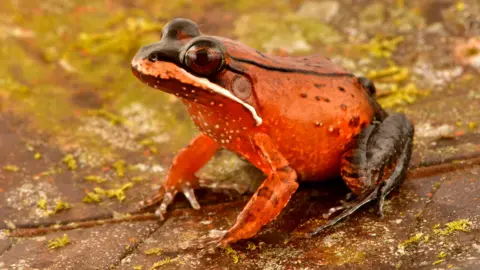 Trond Larsen
Trond Larsen
The Loreto White-lipped Frog is unusually bright compared to its closest relatives
An amphibious mouse with webbed feet and a blob-headed fish are among 27 new species scientists have discovered in Peru.
They were found in an expedition to Alto Mayo - which includes the Amazon rainforest - by scientists from the non-profit organisation Conservation International and members of local indigenous groups.
Up to 48 other new species may also have been found, although further study will be needed to determine whether they are new, Conservation International says.
"Discovering so many new species of mammals and vertebrates is really incredible, especially in such a human-influenced landscape," said Trond Larsen, senior director at Conservation International.

 Ronald Diaz/ Conservation International
Ronald Diaz/ Conservation International
Alto Mayo is a protected area in northern Peru with multiple ecosystems and Indigenous territories.
It has a relatively high population density, putting pressure on environmentalism through deforestation and agricultural expansion, Conservation International said.
Yulisa Tuwi, an Awajún woman who assisted with the research, said the report "allows the Awajún to protect our culture, natural resources and our territory", as it gives them a better understanding of the ecosystems.
"[The Awajún] have extensive traditional knowledge about the forests, animals and plants they live side-by-side with," Mr Larsen said.
The expedition also found a new species of dwarf squirrel, eight types of fish, three amphibians and 10 types of butterfly.

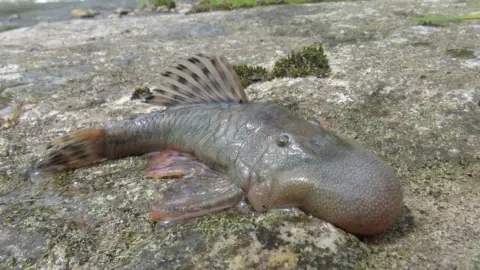 Robinson Olivera/ Conservation International
Robinson Olivera/ Conservation International
This "blob-headed" fish is a type of bristlemouth armoured catfish
This "blob-headed" fish is a new discovery to science, but the Indigenous Awajún people who helped with the expedition were already aware of its existence.
The fish scientists were particularly shocked by its enlarged head - something they had never seen before.

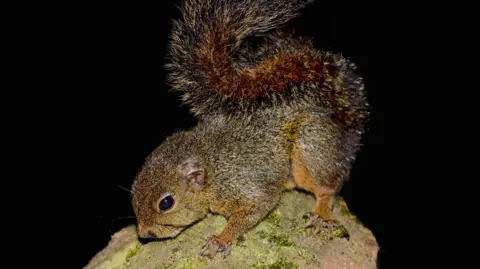 Ronald Diaz/ Conservation International
Ronald Diaz/ Conservation International
A new species of dwarf squirrel will also belong to a new genus, giving it a higher level of distinction
This dwarf squirrel measures just 14cm (5.5in), half the length of an average grey squirrel in the UK, which ranges from 24 to 29cm, according to the UK Squirrel Accord.
"[It] fits so easily in the palm of your hand. Adorable and beautiful chestnut-brown colour, very fast," Larsen said.
"It jumps quickly and hides in the trees."

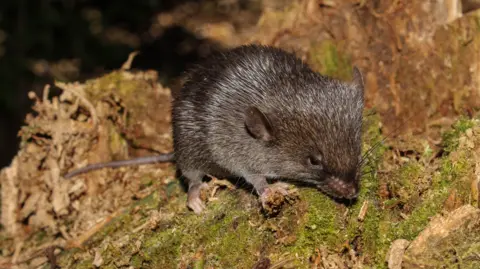 Ronald Diaz/ Conservation International
Ronald Diaz/ Conservation International
Spiny mice are known for their distinctive spines, similar to hedgehogs
Scientists discovered a new species of spiny mouse - named after the especially stiff guard hairs found on their coats, which function similar to the spines of a hedgehog.
They also found a new "amphibious mouse", which has partially webbed feet and eats aquatic insects.
It belongs to a group of semi-aquatic rodents considered to be among the rarest in the world, with the few species known to exist only spotted a handful of times by scientists.

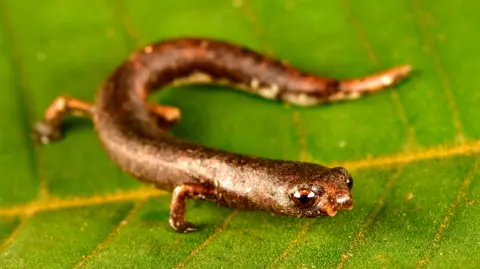 Trond Larsen
Trond Larsen
This new species of climbing salamander was abundant but only in a small patch of unique white sand

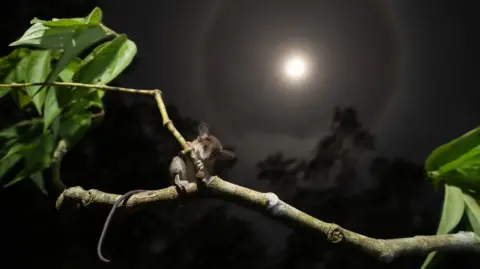 Marlon Dag/ Conservation International
Marlon Dag/ Conservation International
A tiny arboreal opossum species has large ears with excellent hearing. It is a type of marsupial, most of which carry their young in a pouch

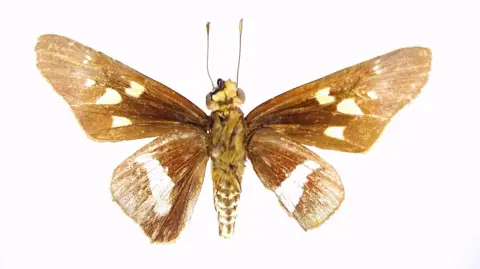 Gorky Valencia/ Conservation International
Gorky Valencia/ Conservation International
A new species of skipper butterfly, one of 10 new species of butterfly discovered on the expedition

 3 weeks ago
12
3 weeks ago
12








 English (US) ·
English (US) ·